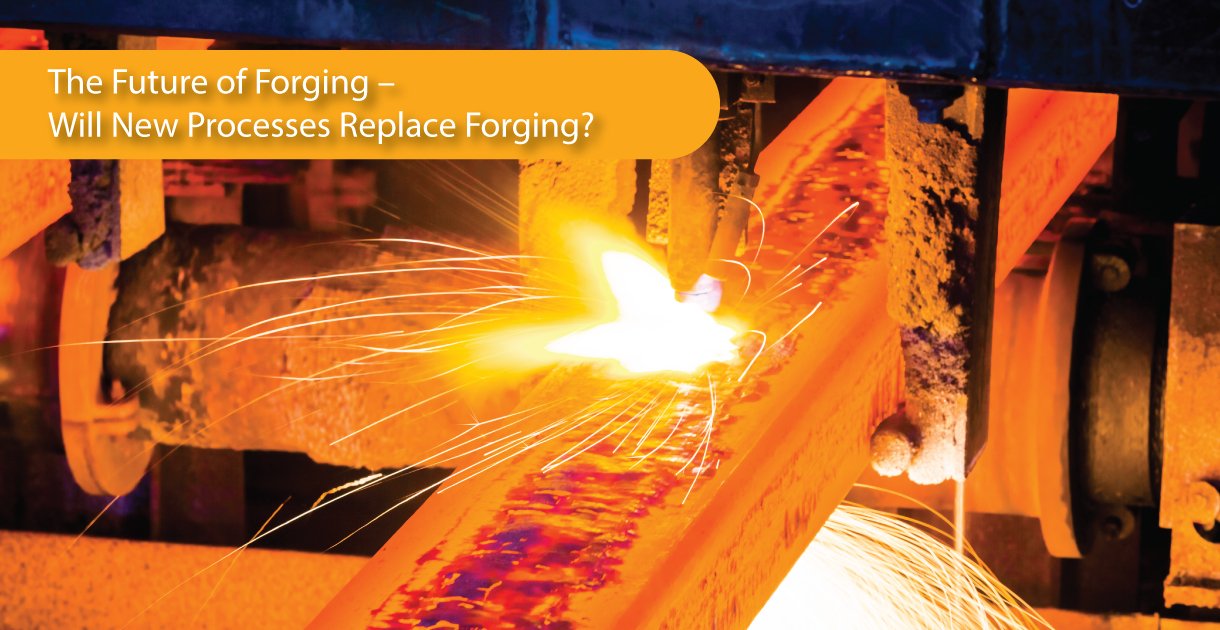Forging has been a crucial manufacturing process for centuries, enabling the production of durable and reliable metal components used in various industries. However, as technology advances and new manufacturing techniques emerge, there is a growing question: will new processes replace forging in the future?
In this blog, we will explore the current state of forging, its advantages, and the potential challenges it faces. We will also delve into emerging manufacturing processes that have the potential to revolutionize the industry. While it is too early to predict the exact outcome, understanding these new processes can shed light on the future of forging and its role in the manufacturing landscape.
What is Forging?
Forging is a manufacturing process that involves shaping metal by applying compressive forces. It is a hot or cold forming process in which a solid piece of metal, known as a billet or workpiece, is deformed to achieve the desired shape and properties.
During forging, the metal is typically heated to a specific temperature to make it more malleable and easier to shape. The heated workpiece is then placed on a die or an anvil, and a compressive force is applied using a hammer, press, or other forging equipment. The force deforms the metal, causing it to flow and fill the contours of the die, resulting in the desired shape.
Metal Forging
Metal forging is a specific type of forging that involves the shaping and deformation of metal materials to produce finished parts or components. It is a manufacturing process that utilizes compressive forces to reshape metal into desired shapes, often through the application of heat.
In metal forging, a solid piece of metal, known as a billet or ingot, is heated to a temperature that allows it to be more easily manipulated. The heated metal is then placed onto a die, which is a tool or mold with the desired shape. Compressive forces are applied to the metal, typically using a hammer, press, or other forging equipment, causing the metal to flow and fill the contours of the die.
Open Die Forging
Open die forging, also known as smith forging or hand forging, is a forging process in which the metal workpiece is shaped between multiple flat or simple-shaped dies. Unlike closed die forging, open die forging does not fully enclose the workpiece within dies, allowing the metal to flow freely during the deformation process.
Hot Forging
Hot forging is a metal forging process that involves shaping and deforming a heated metal workpiece to achieve the desired shape. In hot forging, the metal is heated above its recrystallization temperature, typically between 1,100 to 1,250 degrees Celsius (2,012 to 2,282 degrees Fahrenheit), to enhance its plasticity and make it more malleable.
Cold Forging Process
Cold forging is a metalworking process in which a metal material is shaped and formed at room temperature, without the need for heating the material. It is also known as cold extrusion or cold heading. The process involves applying pressure to the metal material using specialized dies and punches, resulting in the desired shape and dimensions.
Here is a general overview of the cold forging process:
- Material selection: Cold forging can be performed on various metals, including steel, aluminum, copper, and their alloys. The choice of material depends on the desired properties and the specific application.
- Billet preparation: The starting point of cold forging is a cylindrical or round-shaped metal piece called a billet. The billet is usually cut from a larger bar or wire to the required length.
- Lubrication: Before the forging operation, lubricants or coolants are applied to the billet and the dies. This helps reduce friction and heat generated during the process and facilitates the flow of metal.
- Die design: The dies used in cold forging are designed to impart the desired shape and features to the metal. The dies consist of a punch, which applies the force to the billet, and a die, which shapes the metal into the desired form. The dies are often made from hardened tool steel to withstand the forces involved.
- Cold forging operation: The billet is placed between the punch and the die. As pressure is applied, the metal deforms and takes the shape of the die. The process can involve multiple stages or operations, with each stage gradually forming the metal closer to the final shape.
- Finishing operations: After the initial cold forging operation, additional secondary operations may be performed to refine the shape and improve the surface finish of the forged part. These operations can include trimming, piercing, coining, or thread rolling, among others.
- Heat treatment and finishing: Depending on the material and application, the cold-forged part may undergo heat treatment processes such as annealing, quenching, or tempering to enhance its mechanical properties. Finally, the part may be finished through processes like machining, polishing, or coating.
Cold forging offers several advantages, including improved material properties, increased strength and durability, reduced material waste, and enhanced production efficiency. It is commonly used in the automotive, aerospace, construction, and manufacturing industries to produce a wide range of components, such as bolts, screws, nuts, fittings, gears, and shafts.
Conclusion
In conclusion, while advancements in manufacturing processes continue to evolve, forging remains a highly reliable and efficient method for producing strong and durable metal components. While new processes such as additive manufacturing and advanced forming techniques have gained attention, they are still in the early stages of development and face limitations in terms of material properties and cost-effectiveness. Furthermore, traditional forging techniques can be enhanced with modern technologies, such as automation and advanced lubrication systems, to further improve productivity and quality. As a leading provider of critical cleaning, coating, and lubrication solutions, MicroCare Group is at the forefront of supporting the forging industry with innovative products that enhance performance, reduce environmental impact, and ensure the longevity of this time-tested manufacturing process. With ongoing research and development, forging is poised to continue its role as a vital and enduring method for metal component production in the future.


